My love for sake can be traced back to a winter night in 2006 when I had my first sip of Shinkame junmai. After that night, I was hooked. Shinkame had revealed to me the potential for sake that I had never known.
I wanted to visit this famed brewery so badly that I cold-emailed them, hoping I'd get some kind of response. After a few days, voila! The seventh generation owner of the brewery, Yoshimasa Ogawahara-san himself, emailed to invite Kayoko and me to his brewery in Saitama prefecture.
Kayoko and I made the pilgrimage to Shinkame (Holy Turtle) brewery on January 16, 2015 to ask Ogawahara-san if he would consider exporting his sakes to the U.S.
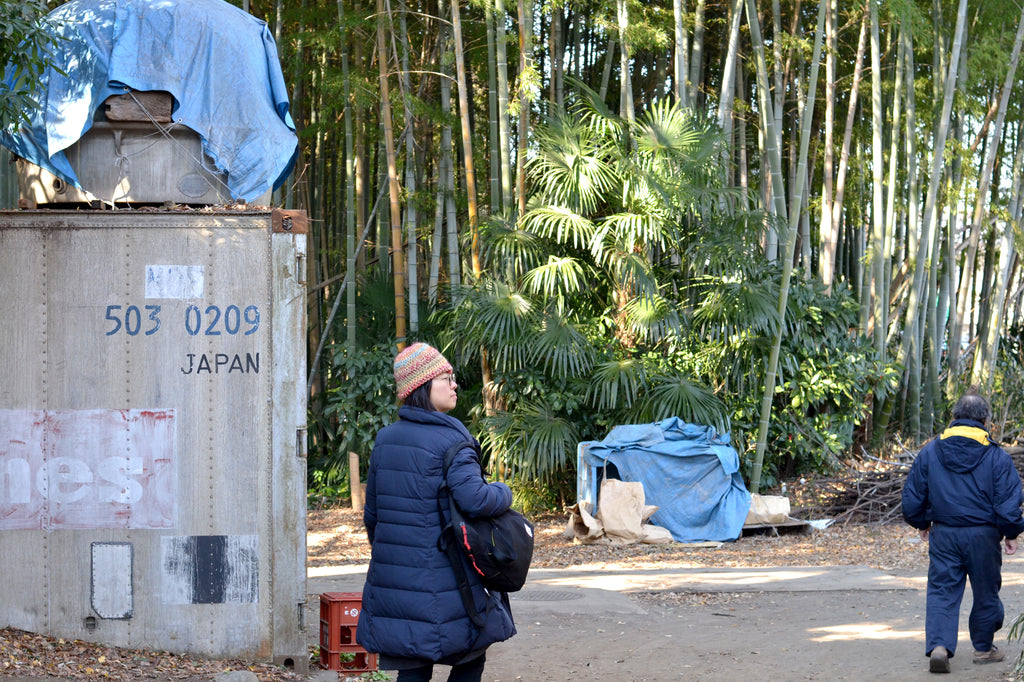
Ogawahara-san is a legend of sorts – he was the first postwar junmai advocate. During WWII, sake makers were encouraged to add brewers alcohol (most often distilled grain alcohol) to sake since there was a rice shortage. The practice continued after the war, but Ogawahara-san insisted his brewery exclusively brew junmais, despite higher taxes on 100% rice sakes. He was also a champion of aging sake – all of his sakes are aged for at least two years. Thanks to aging, his sakes are smooth, complex and melt onto the palate.
Shinkame means "Holy Turtle" and I always wondered why it had that name. Legend has it that there was a shrine behind the brewery generations ago that celebrated the god of wisdom. There was a turtle that lived there, believed to be the messenger of this god; the brewery named itself after this turtle.
 Like the turtle, Ogawahara-san was a messenger - his message was to spread the junmai gospel. The journey to do so was long and hard, but like the turtle versus the hare, I'd say Ogawahara-san prospered. Junmai has made a roaring comeback thanks to his efforts. Brewers young and old have woken up to the merits of junmai (imagine a world only full of futsushu – it would be utterly bleak).
Like the turtle, Ogawahara-san was a messenger - his message was to spread the junmai gospel. The journey to do so was long and hard, but like the turtle versus the hare, I'd say Ogawahara-san prospered. Junmai has made a roaring comeback thanks to his efforts. Brewers young and old have woken up to the merits of junmai (imagine a world only full of futsushu – it would be utterly bleak).
It was a cold, crisp morning in January 2016 when Kayoko and I arrived at Hasuda Station. Ogawahara-san picked us up in his rugged Land Rover and after a quick 10 minute drive we arrived at the brewery. Production was in full force since it was the wintertime – prime sake brewing season.

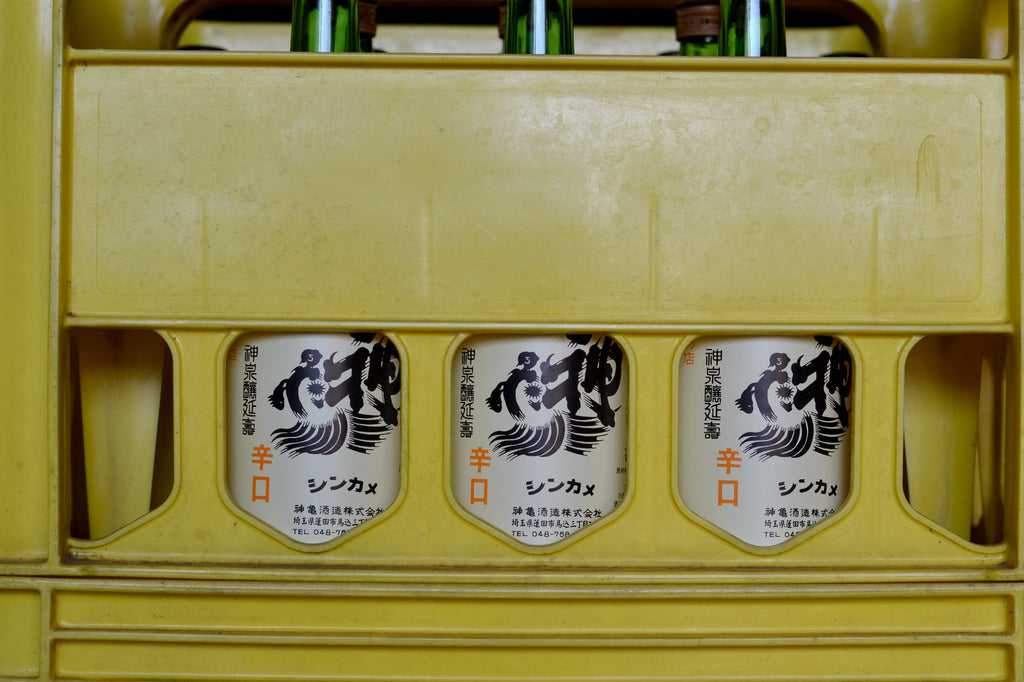
In the koji room, kurabito (brewery workers) were cultivating koji (aspergillus oryzae) on rice.
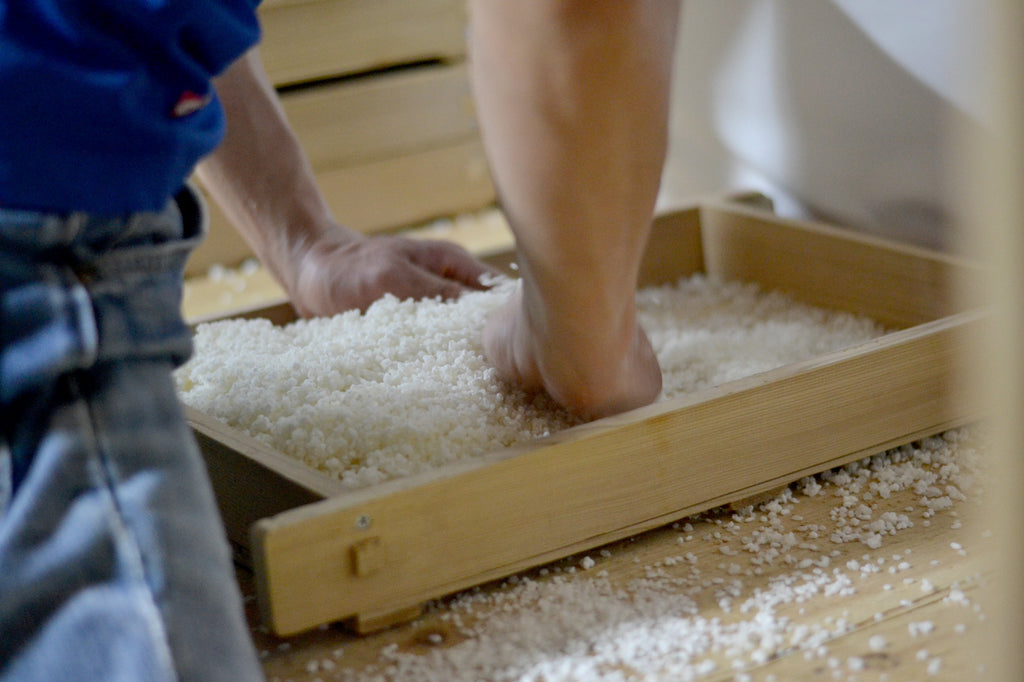
Cultivating koji requires 24 hour attention, constantly balancing temperature and humidity to encourage the mold to grow.


It takes a lot of attention to detail and plenty of blood, sweat and tears. Literally – look at this guy's shirt!
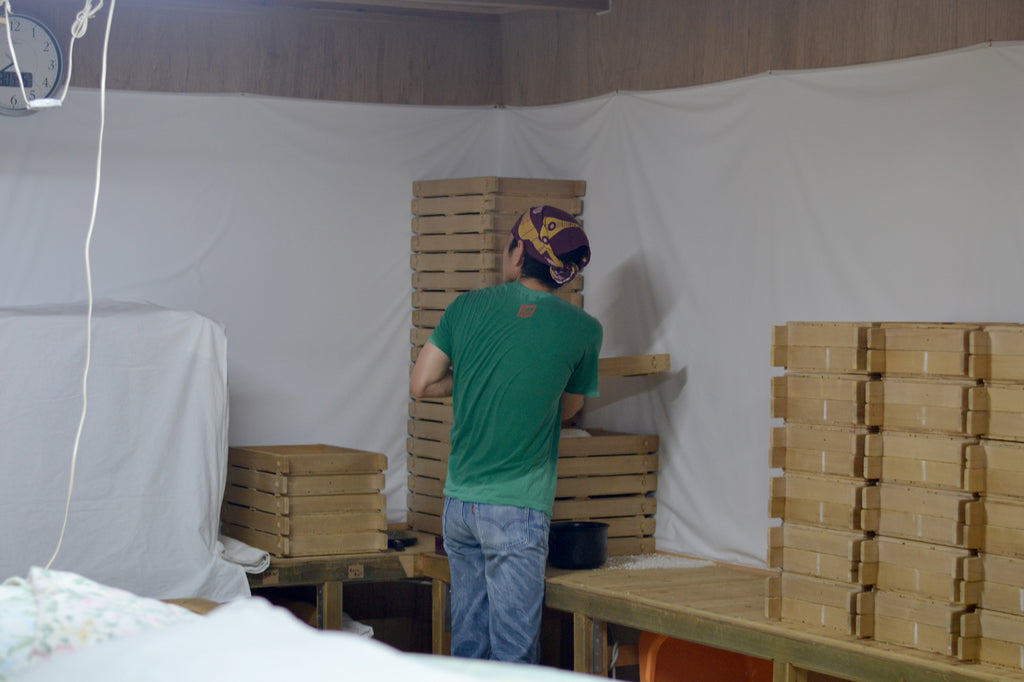
Koji beds.
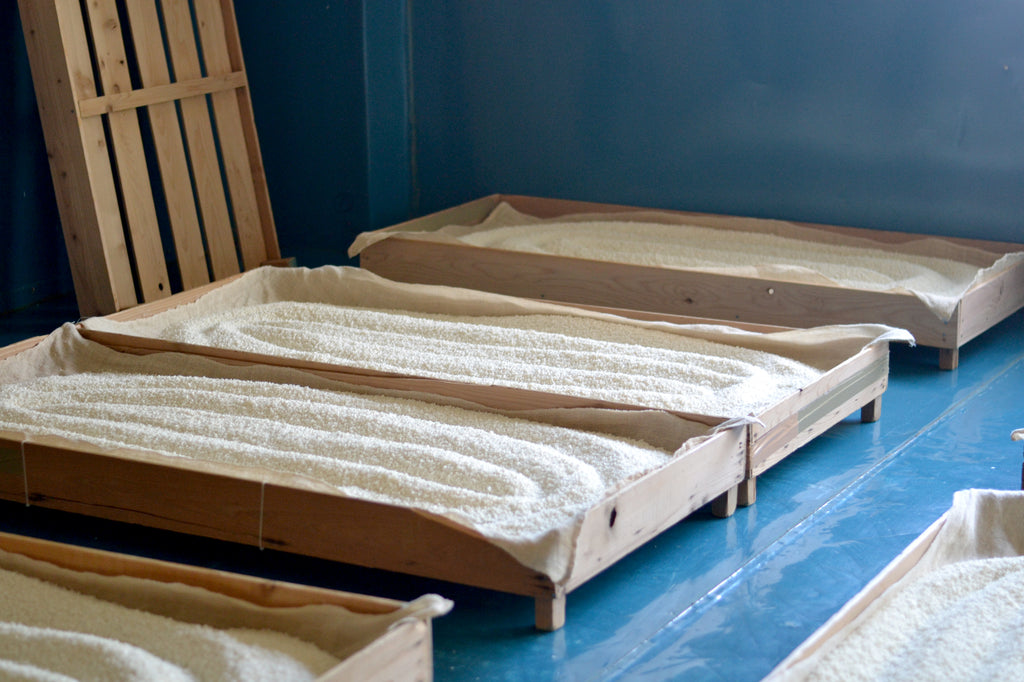
Ogawahara-san took us around to see the fermentation tanks.

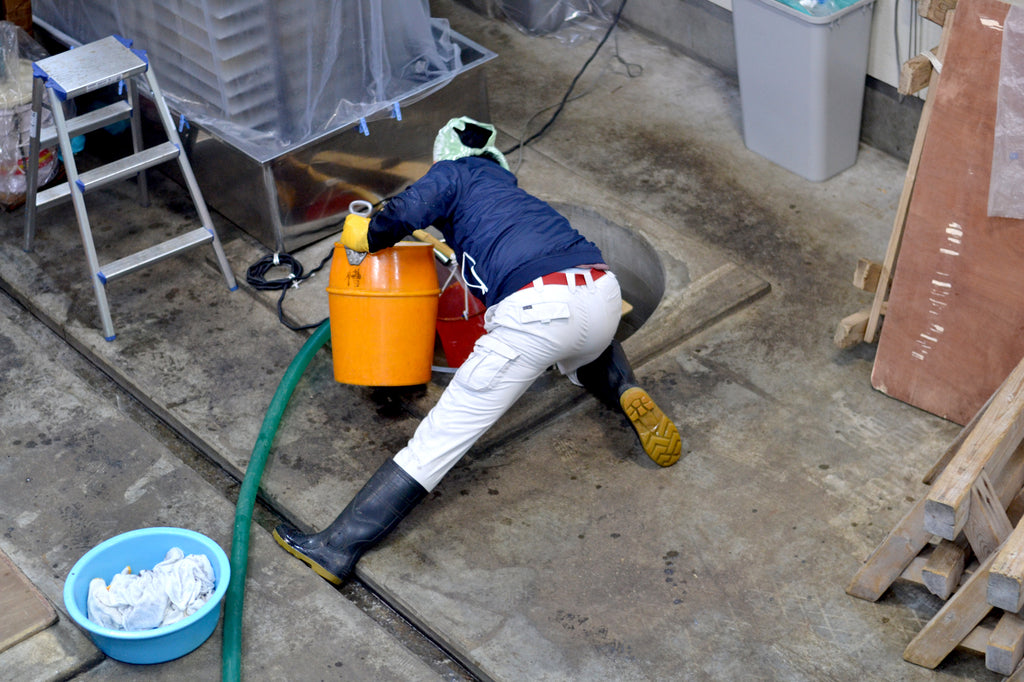
Then he allowed us to drink from the stream of fresh-pressed sake! We have the best job.


Pressing the sake.

Back in the tasting area, where Ogawahara-san spent most of his time, he showed us his portable sake warmer.
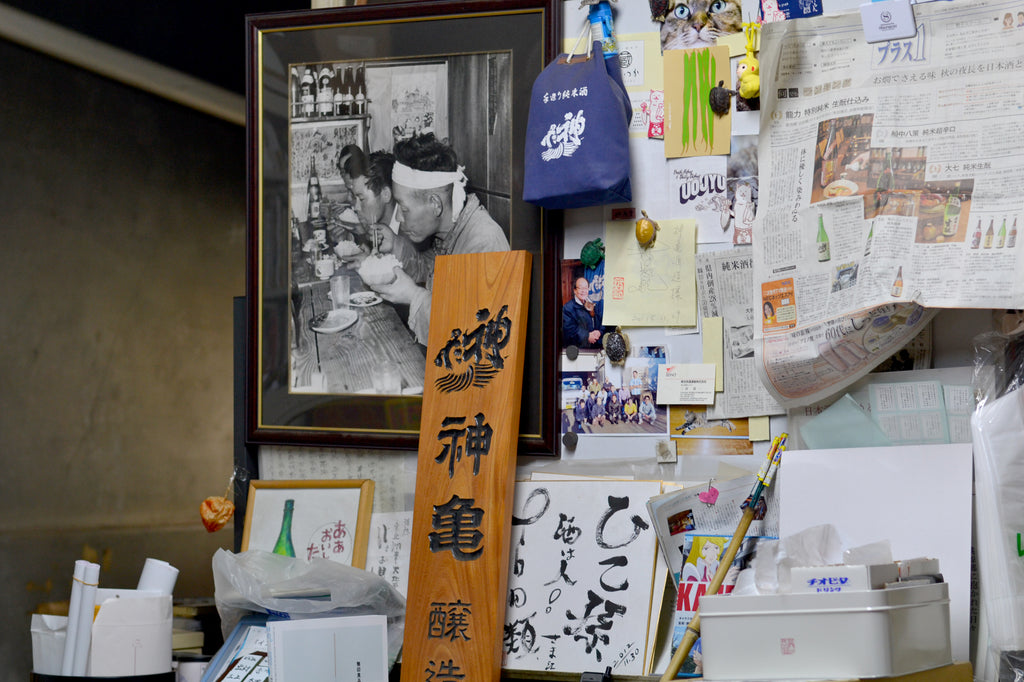
The master himself warmed up the sake for us!
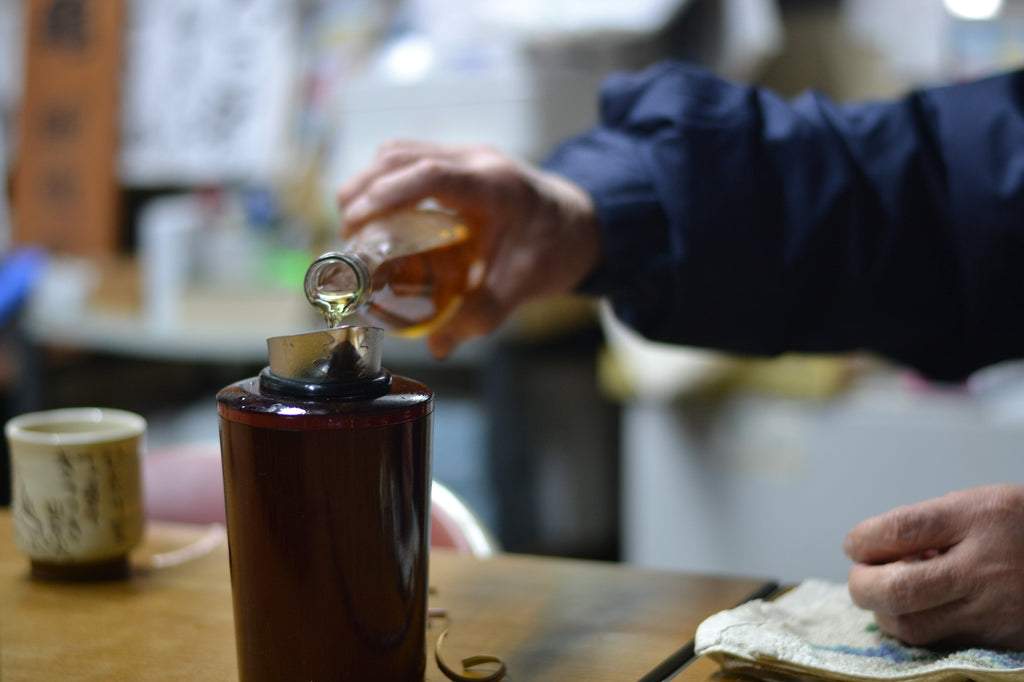
Indeed, his sakes opened up and revealed themselves when warmed.
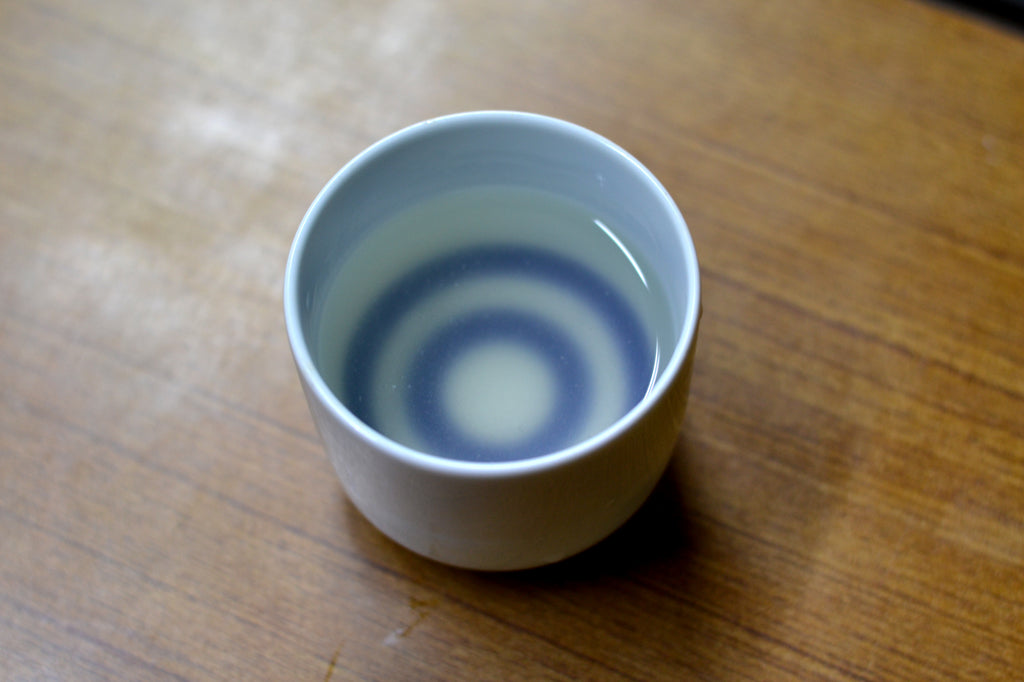
The melt-in-your-mouth smoothness full of mushrooms, caramel and earthiness has the cleanest finish that must be experienced first hand.
 Sadly, Ogawahara-san passed away this spring. Even though he is gone from this world, his legacy lives on and on – like the turtle at the shrine. We were so lucky to meet him and his wife, and enjoy a whole day with them. He was a force in the sake world and his mark will never be forgotten.
Sadly, Ogawahara-san passed away this spring. Even though he is gone from this world, his legacy lives on and on – like the turtle at the shrine. We were so lucky to meet him and his wife, and enjoy a whole day with them. He was a force in the sake world and his mark will never be forgotten.
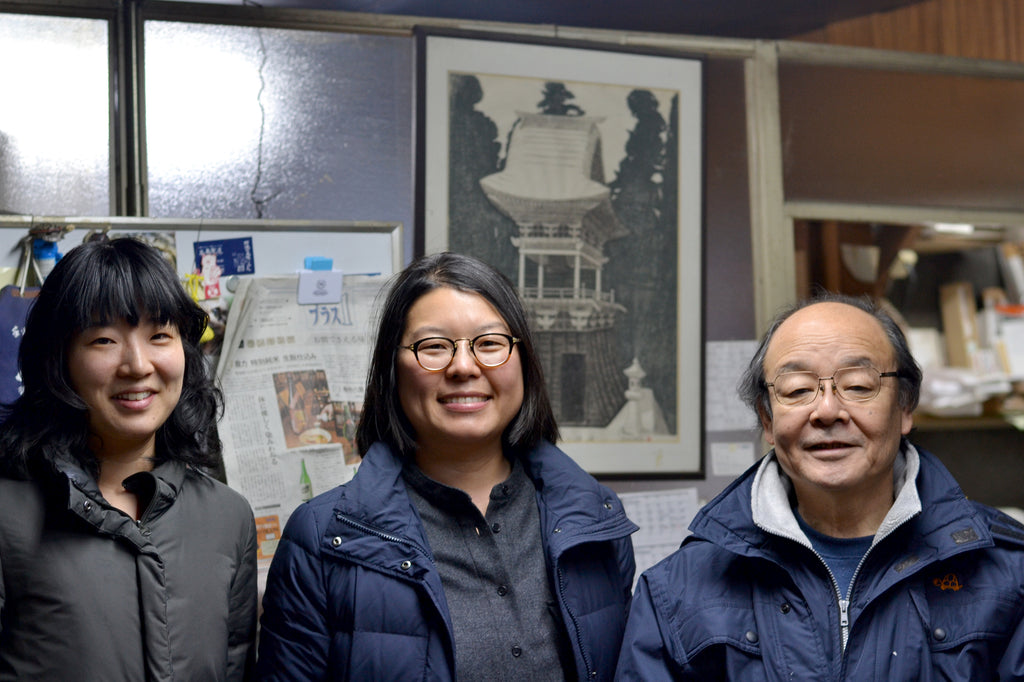
To enjoy the same bottle that urged me to become a steward of sake, visit our online store.




Comments (0)
There are no comments for this article. Be the first one to leave a message!